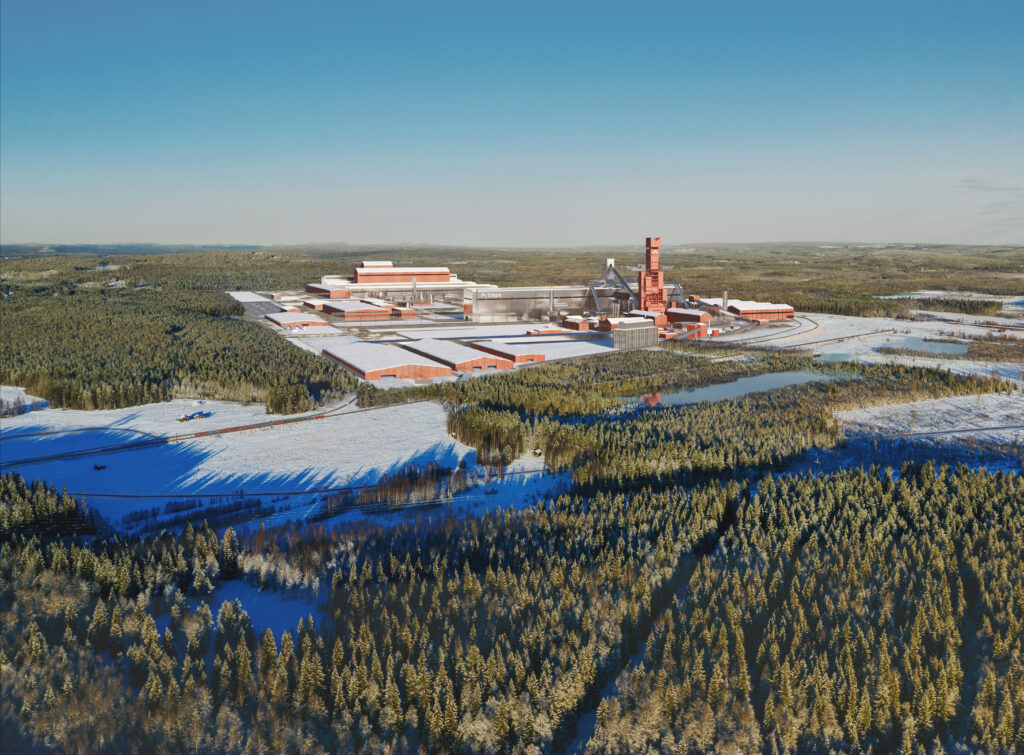New name, new membership as we welcome Stegra to LeadIT.
Stegra started as H2 Green Steel in 2021 to reduce emissions in the steel industry, now with a new name comes a new chapter and a global focus on green hydrogen and green iron, as well as green steel. Stegra has a mission to start a clean industrial revolution and we’re delighted to welcome them to LeadIT to share and support that ambition to decarbonize at scale. The company’s membership was announced during the LeadIT Climate Week event in New York by Benjamin Dousa, Sweden’s Minister for International Development Cooperation & Foreign Trade.
 Benjamin Dousa, Minister, International Development Cooperation & Foreign Trade, Sweden; Lina Håkansdotter, Chief Sustainability & Corporate Affairs Officer, Stegra; Tanmaya Lal, Secretary, Ministry of External Affairs, India
Benjamin Dousa, Minister, International Development Cooperation & Foreign Trade, Sweden; Lina Håkansdotter, Chief Sustainability & Corporate Affairs Officer, Stegra; Tanmaya Lal, Secretary, Ministry of External Affairs, India
A steel plant of the future
In Boden, northern Sweden Stegra is buidling Europe’s first greenfield steel mill in 50 years but this will be a steel mill unlike any other seen before. It will produce green steel in a fully integrated process replacing coal with green hydrogen and using electricity from renewable sources. Compared to steel making in Europe this promises to deliver emissions reductions of up to 95%. The €6.5 billion of funding secured by Stegra means construction is well underway and full scale production is scheduled to start in 2026.
 Stegra construction site in Boden, summer 2024/Stegra
Stegra construction site in Boden, summer 2024/Stegra
Green hydrogen
Fundamental to Stegra’s plans for green steel is green hydrogen and the company is also bulidng a huge electrolyzer plant in Boden. When completed it will be one of the word’s largest and Stegra plan for it to produce enough green hydrogen to produce 5 million tonnes of steel annually by 2030. The hydrogen is green because the electrolysis process which makes the hydrogen is powered by renewable electricity.
 A impression of the finished site in Boden/Stegra
A impression of the finished site in Boden/Stegra
Ambitions beyond Sweden
Stegra is now looking to take it’s decarbonization mission outside of Sweden to new projects and locations under consideration in the long term include Portugal, Canada and Brazil.
Read our interview with the Stegra CEO, Henrik Henriksson as he outlines his vision for the future of steel and heavy industry.
 Henrik Henriksson, CEO, Stegra/Stegra
Henrik Henriksson, CEO, Stegra/Stegra
Swedish companies have been at the forefront, developing and implementing scalable green industrial solutions, setting examples for others.....I am very pleased to announce that Stegra is a new member of LeadIT. Welcome to the LeadIT family.
Benjamin Dousa
Minister for International Development Cooperation & Foreign Trade, Sweden
Why did Stegra want to join LeadIT?
Stegra is joining LeadIT for several reasons. Firstly, as a purpose-driven company with 1.5C ambition and decarbonization at its core, it is our ambition to impact and accelerate the developing international agenda for green industrial policies and practices. LeadIT is in this aspect well positioned with its broad representation from both leading countries and big industrial companies. Secondly, the network of researchers, industry transition policymakers, and industry representatives offers a good platform to discuss, learn, and share how the green transition can spread and accelerate in all parts of the world. Thirdly, we hope the network can give insights and contacts in new countries and sectors committed to industrial decarbonization.
What will Stegra bring to LeadIT?
Stegra is an industrial scale-up with a purpose to decarbonize hard-to-abate industries. At our first plant in northern Sweden, we will produce green steel, which generates up to 95 percent less CO₂ emissions compared to traditional blast furnace-based steelmaking in Europe. It will be the first commercial-scale green steel plant and production will be based on the three platforms: green hydrogen, green iron, and green steel. Our aim is to build additional facilities in other parts of the world and use our gained expertise in green hydrogen to contribute to the decarbonization of other sectors as well.
In the process of getting the Boden project fully financed and in the ongoing construction, our innovation approach has gone beyond technology to encompass finance, market development, policy analysis, and digitalization.
Stegra also strives to reach gender equality among our staff, including the management team, which is unusual in the steel sector, and we have ambitious sustainability policies across the business. We believe that our approach and our experiences can inspire the LeadIT initiative as a whole and enable a faster decarbonization of the global industry.
What is Stegra’s vision for the steel sector and other heavy industry of the future?
Our vision is that the steel sector and other high-emitting industries globally set the aim to decarbonize and take action to reach net zero before mid-century. For this to be possible, policymakers worldwide need to implement a policy environment that incentivizes the adoption of green technologies and starts to put real costs on the use of fossil fuels.
It is also important that actors in the value chain such as steel purchasers and end-consumers of goods including steel demonstrate a demand for these decarbonized materials. Since the global demand for steel is expected to grow for many decades, resource efficiency measures and the availability of scrap will not be sufficient to meet demand. It is therefore crucial that the production of virgin steel is decarbonized, especially in the iron-making stage which is responsible for most CO2 emissions. To put the sector on a 1.5C path will need a range of solutions but the most promising currently is hydrogen-based direction reduction which Stegra utilizes.
Where does Stegra see its role in that future?
As other scale-ups we see ourselves as an enabler and a catalyst for change, inspiring other companies to raise their climate ambition and ramp-up action. Our aim is to build additional facilities in other parts of the world and by that impact a wider range of value chains, not only green iron and green steel production plants but also in other heavy industry sectors. We have the ambition to be recognized as a global climate leader, driving the transition by producing near-zero materials. To achieve this, we must show that our production is not only possible but also profitable.
How important are industrial start-ups like Stegra to achieving decarbonization?
Scale-ups like Stegra which invest fully in green technologies play a crucial role in accelerating decarbonization, especially in sectors within the heavy industries. We do not have any legacy production; our future lies entirely in making the new green technologies work. With this innovative mindset and agility, we can challenge the current modus operandi in this industry and inspire others towards a net-zero- future.
